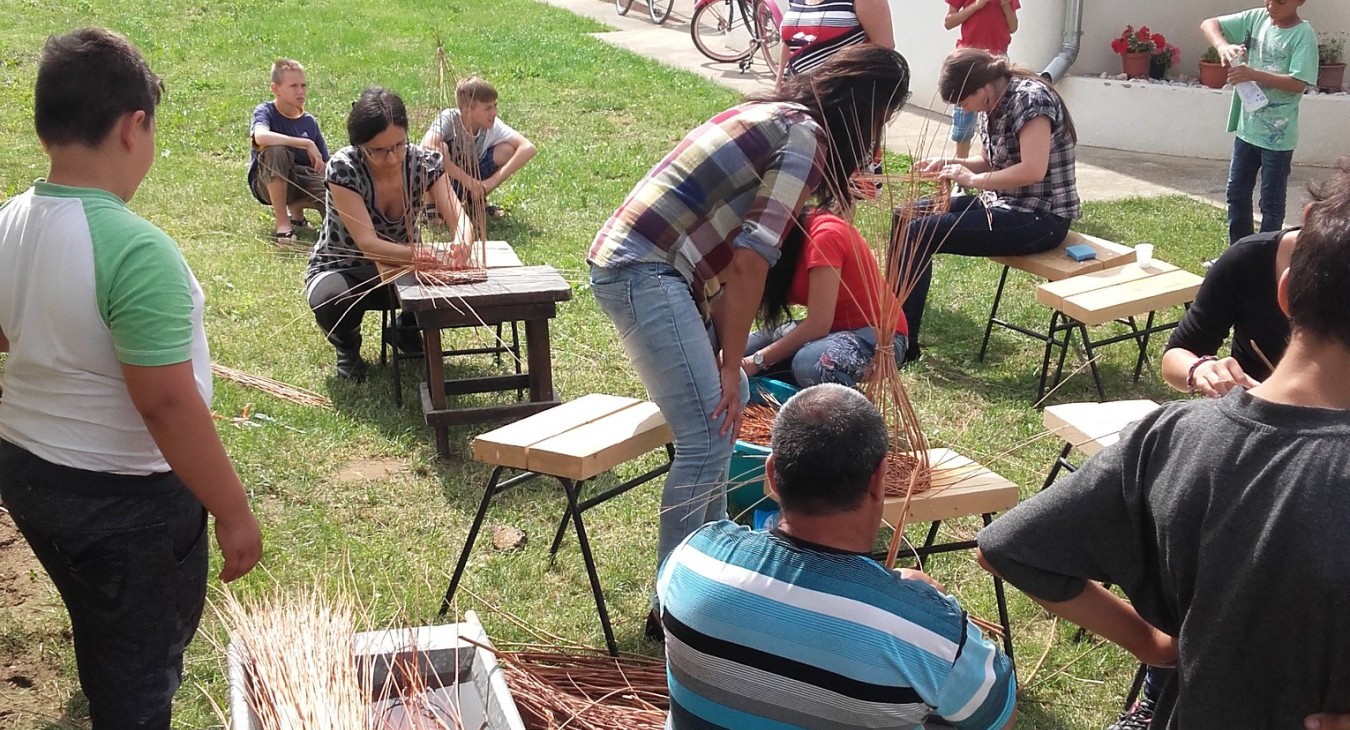Rural Roma Heritage communities
Roma Country House Hodász
Even though Roma are the largest minority group in Hungary (as well as in the neighbouring Eastern-European countries) their ethnic and socio-cultural characteristics are extremely varied and heterogeneous. The question of safeguarding, managing and re-using Roma heritage in Hungary and specifically in its most deprived rural areas (mostly in the North-Eastern part of the country, near the Ukrainian and Slovakian border) has already been researched by the ELTE team in the REACH (Re-designing access to CH for a wider participation in preservation, (re)use and management of European culture) Horizon 2020 project, between 2017-2020.
The main partner of the research team is the Roma Country House in Hodász, founded in 2001, which is the first institution of its kind in Hungary. The Country House, located in an extremely deprived sub-region in north-eastern Hungary, not only plays an eminent role in preserving the Roma traditions but also in local community-building and in ensuring diverse artistic and professional activities to the children and teenagers of the village. Hodász is a large village in Szabolcs-Szatmár-Bereg country, located about 50 km from both the Ukrainian and the Romanian border. Of its 3300 inhabitants, around 40% are Roma (both Vlach and Hungarian Gypsies). The country house is located in the largest segregated area among the three zones appearing on the website of the village. According to a demographic study, based on the census of 2011, the surroundings of the country house are characterised by a very low level of education (70% of the local population only finished primary school), very bad housing quality (Almost 50% of the flats are low comfort, 45% without comfort; lacking bath, toilet, gas and electricity) and a high ratio of unemployment and inhabitants who lack a regular income. The Roma community in Hodász has a long, complex, and interesting history.
With its Roma Greek Catholic chapel and a kindergarten, created in the middle of the Roma settlements, the community has a long history of social cohe- sion and community resilience. Since its foundation, the country house has been a private property and is managed by an NGO. The functioning and the activities of the country house have been made possible by various grants and funds (at the national level TÁMOP11 and the Ministry of Human Capacity; at the international level EEA Grants). Even though the country house greatly exceeds the standard character and requirements of such places, and func- tions much more as a community centre and cultural hub, it does not receive any normative contribution either from the local authorities or from related governmental funds.
Mapping and analysing the possibilities of local Roma heritage preservation through the following channels:
- Supporting the work of the Country House; digitisation of the results of previous programmes, collection of good practices, promotion and dissemination
- Building network with other Roma cultural heritage institutions in rural areas (in Hungary and in other Eastern-European countries) in order to create European Roma cultural routes (in collaboration with the EU-project RomHeritage (romheritage.eu)
- Empowering already existing touristic projects and initiatives (gastronomic, cultural tourism, religious tourism, etc) that are related to intangible (musical, artistic, gastronomic) and tangible (the few existing monuments and memorial sites) of Roma heritage in Hungary.
Local population (Roma and non-Roma inhabitants of the village of Hodász; school pupils, elderly groups), staff members of the Country House and the local Roma kindergarten, local municipality and representatives of regional authorities, local stakeholders of cultural tourism from the county/region, nearby towns and other villages.
The following results are expected from the pilot:
a) Increased knowledge about the existence and the specificities of rural Roma heritage on local, regional and national scale;
b) Planning cultural itineraries that integrate Roma intangible heritage practices and tangible heritage sites;
c) Building a regional network of Roma cultural institutions / tourism-related initiatives and programmes on a regional scale.
Roma Country House, Hodász; József Berey Local History Collection, Nagyecsed
Transnational character of European Roma com- munities; Cooperation with Roma cultural and touristic initiatives in the region/neighbouring countries (Slovakia, Romania).



